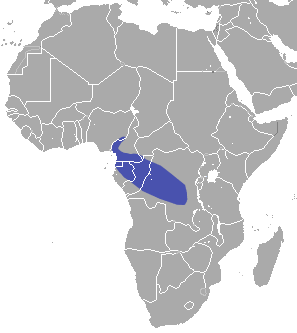
The canebrake tree frogs are a frog genus Aplastodiscus. They are in the family Hylidae. Residing primarily in southeast regions of Brazil near the Atlantic coast. The exception is the Aplastodiscus perviridis which is found mostly in Brazil, but has also been documented being in Argentina, and might reside in Paraguay. The major revision of the Hylidae genus expanded it to include 12 more species originally from Hyla. Before the revision there were only 2 species. There are currently 16 described species with the most recent addition Aplastodiscus heterophonicus being described in 2021.

Aplastodiscus albosignatus, also known as the Bocaina treefrog, is a species of frog in the family Hylidae. It is endemic to Brazil. Its natural habitats are subtropical or tropical moist lowland forests, subtropical or tropical moist montane forests, and rivers. It is threatened by habitat loss.

Aplastodiscus arildae is a species of frog in the family Hylidae. It is endemic to Brazil. Its natural habitats are subtropical or tropical moist lowland forests and rivers.

Aplastodiscus cochranae is a species of frog in the family Hylidae. It is endemic to the coastal mountains of Santa Catarina, Brazil. The specific name cochranae honors Doris Mable Cochran, an American herpetologist. Common name canebrake treefrog has been coined for this species.

Aplastodiscus ehrhardti is a species of frog in the family Hylidae. It is endemic to Brazil. Its natural habitats are subtropical or tropical moist lowland forests and intermittent freshwater marshes. It is threatened by habitat loss; however, despite this, it remains in the "Least Concern" category "in view of its relatively wide distribution, presumed large population, and because it is unlikely to be declining fast enough to qualify for listing in a more threatened category".

Aplastodiscus eugenioi is a species of frog in the family Hylidae. It is endemic to Brazil. Its natural habitats are subtropical or tropical moist lowland forests and rivers. It is threatened by habitat loss.
Aplastodiscus flumineus is a species of frog in the family Hylidae. It is endemic to Brazil. Its natural habitats are subtropical or tropical moist montane forests and rivers. It is threatened by habitat loss.

Aplastodiscus leucopygius is a species of frog in the family Hylidae, endemic to Brazil. Its natural habitats are subtropical or tropical moist lowland forests, rivers, intermittent freshwater marshes, plantations, rural gardens, heavily degraded former forests, and irrigated land.
Aplastodiscus musicus is a species of frog in the family Hylidae. It is endemic to Brazil. Its natural habitats are subtropical or tropical moist montane forests and rivers. It is threatened by habitat loss.

Aplastodiscus perviridis is a species of frog in the family Hylidae. It is found in Argentina, Brazil, and possibly Paraguay. Its natural habitats are subtropical or tropical moist lowland forests, subtropical or tropical moist montane forests, subtropical or tropical moist shrublands, subtropical or tropical dry lowland grasslands, rivers, and freshwater marshes.

Aplastodiscus sibilatus is a species of frog in the family Hylidae. It is endemic to northeastern Brazil and is known from central-eastern Bahia and Alagoas. The specific name sibilatus is derived from the Latin sibilus meaning "whistle", in allusion to the characteristic call of the species.
Hyperolius albofrenatus is a species of frog in the family Hyperoliidae. It is endemic to Tanzania. Its natural habitats are rivers, freshwater marshes, and intermittent freshwater marshes.

Mantidactylus albofrenatus is a species of frog in the family Mantellidae. It is endemic to eastern Madagascar near An'Ala and Andasibe. Common name eastern Madagascar frog has been proposed for it.
The Kern Plateau salamander is a species of salamander in the family Plethodontidae, endemic to California, in Tulare and Inyo, and Kern Counties in the western United States.

The Ugandan lowland shrew or Moon shrew, is a species of mammal in the family Soricidae. It is found in Kenya and Uganda. Its natural habitats are subtropical or tropical swamps and montane forests.

The Mount Cameroon forest shrew or arrogant shrew, is a species of mammal in the family Soricidae endemic to Cameroon. Its natural habitat is subtropical or tropical moist montane forests.

The greater forest shrew is a species of mammal in the family Soricidae found in Cameroon, the Central African Republic, the Republic of the Congo, Equatorial Guinea, Gabon, and Nigeria. Its natural habitat is subtropical or tropical moist lowland forest.

The moustached brushfinch is a species of bird in the family Passerellidae.

Aplastodiscus ibirapitanga is a species of frog in the family Hylidae. Its natural habitats are subtropical or tropical moist lowland forests, subtropical or tropical moist montane forests, and rivers. It tolerates some habitat modification and is not considered threatened.

Aplastodiscus lutzorum is a species of frogs in the family Hylidae. It is endemic to the Cerrado region in Brazil and is known from the Federal District and the adjacent eastern Goiás and northwestern Minas Gerais states. The specific name lutzorum honors Adolfo and Bertha Lutz, Brazilian zoologists.
















